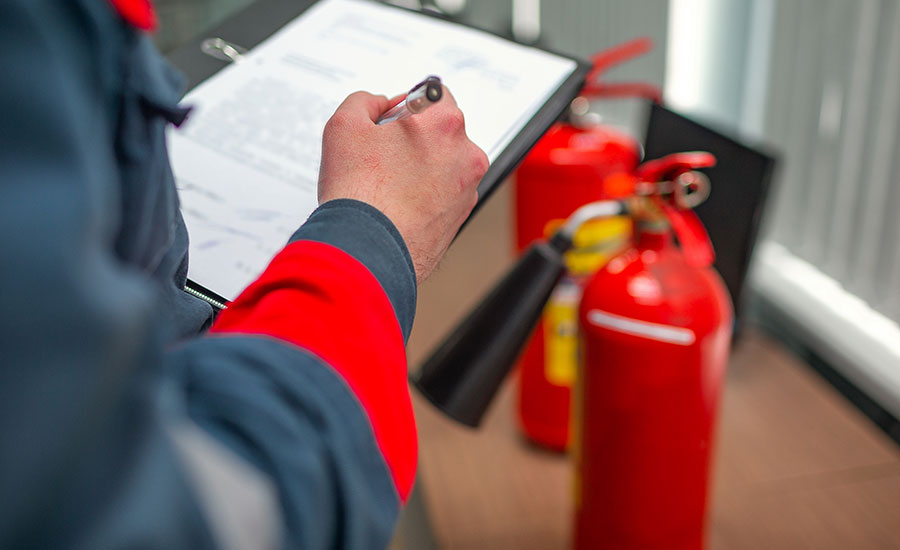
Over 70% of maintenance specialists consider preventive maintenance a crucial factor for decreased downtime, as per a recent report by Plant Engineering.
We’ll explain how preventive maintenance checklists can help you improve the health and life of your equipment, increase productivity, and cut costs related to unexpected downtime.
Plus, we’ll share the benefits of ditching messy paper forms and taking your checklists digitall.
Digitize your checklists.
Try doForms for free!
Table of Contents
What Is a Preventive Maintenance Checklist?
A preventive or preventative maintenance checklist is a list of tasks, tests, and inspections to be performed on equipment, systems, or machinery at scheduled time intervals.
The purpose of a preventive maintenance checklist is to guide maintenance personnel to proactively check for potential issues, prevent breakdowns, and ensure that equipment is maintained in optimal condition.
Preventive maintenance is one of the four types of maintenance programs that businesses typically use, along with corrective maintenance, risk-based maintenance, and condition-based maintenance.
While each of the four types of maintenance programs offers different benefits, the proactive approach of preventative maintenance can be a game changer in promptly addressing potential downtime threats and reducing unexpected downtime.
Preventive maintenance checklists, which either exist as step-by-step checklists or pass-or-fail checklists, can be organized according to:
- Equipment assets
- System types
- Season, for seasonal maintenance checks
- Daily, weekly, monthly, quarterly, and yearly intervals
- Level of priority

Unlike paper checklists, digital checklists can be edited, saved, and electronically sent to employees or stakeholders
Benefits Of Preventative Maintenance Checklists
Preventative maintenance checklists can help ensure that employees stick to a routine schedule and check every component needed to increase the lifespan of your equipment and reduce costly downtime.
The benefits of following a checklist include:
- Standardization: Preventative maintenance checklists provide a consistent set of tasks and procedures for each piece of equipment or system. This ensures that maintenance activities are performed uniformly across different locations and by different technicians.
- Increased productivity: Outlining the steps that a technician should perform in order to service and maintain equipment increases productivity throughout each inspection.
- Cost-effectiveness: Technicians can be deployed strategically within a facility, taking into account their availability, operation downtimes, and equipment location, which also optimizes the use of resources.
- Improved safety: The detailed nature of preventative maintenance reduces the likelihood of human error in overlooking important tasks. Prioritizing safety, and preventative maintenance checklists reduce the likelihood of workplace incidents and work-related injuries.
- Compliance: The use of predefined checklists helps organizations ensure compliance with manufacturer recommendations, regulatory requirements, and industry standards, minimizing the risk of non-compliance penalties.
- Optimized preventive maintenance strategies: By collecting and analyzing data, preventative maintenance checklists can help collect valuable information for adjusting the program as needed.
Having a preventative maintenance checklist:
- Helps maintenance teams follow step-by-step instructions to cover required tasks
- Helps maintenance teams identify and address potential issues before they escalate and lead to downtime or crisis
- Ensures a structured and organized approach to preventative maintenance tasks
- Allows consistency and uniformity in handling maintenance activities
- Facilitates planning and scheduling of maintenance activities
- Acts as a reminder to take preventive measures and perform regular inspections
- Provides a documented record that can be used for future reference
What Does A Preventive Maintenance Checklist Look Like?
Preventative maintenance checklists will vary depending on the types of equipment you use, your unique operational requirements, industry regulations, and preventive maintenance standards within your organization.
For example, a manufacturing company may have a preventive maintenance checklist tailored to the maintenance needs of its production equipment, including tasks such as calibration, lubrication, and inspection of critical components.
On the other hand, a transportation company operating a fleet of vehicles may have a preventive maintenance checklist that focuses on tire inspection, fluid checks, engine tuning, and brake system maintenance.

Preventative maintenance checklists can help you create a safe and efficient working environment
Preventive Maintenance Pre-Check
A preventive maintenance pre-check is a preliminary assessment performed before scheduled preventive maintenance tasks, to make sure an organized program is put in place.
In a preventive maintenance pre-check, you:
- Delegate preventive maintenance duties: Decide who will be part of the maintenance team and who will use the checklist. Select maintenance technicians and managers, as well as staff members who know the technical side of the equipment and the way it operates.
- Set goals: Based on the resources, structure, industry, size, and other specific factors of your company, create a scope for your plan. This might include fixing certain assets, replacing them or making a general long-term strategy for the equipment.
- Gather in-depth details about your equipment: Document the model and serial number of every piece of equipment, along with the installation date and a record of repairs. Using the information collected, calculate the cost of equipment downtime and acquire a basis for evaluating the program.
- Shortlist equipment: Determine which equipment items should be included in the maintenance program. Prioritize assets with high repair or maintenance costs and equipment that is critical for your operation.
- Create a preventive maintenance schedule: Based on the equipment maintenance history, maintenance standards, inspection times, equipment location, production downtime, technician availability, and even near-miss reports, you can create a preventive maintenance checklist.
- Set KPIs: Set key performance indicators on which you will measure the effectiveness of your preventive maintenance program. Monitoring these KPIs will provide valuable data that can be analyzed and used to inform data-driven decision-making, such as identifying patterns and trends, adjusting maintenance intervals, optimizing resource allocation, or implementing equipment upgrades.
5 Preventative Maintenance Checklist Templates
Find basic templates below for different types of preventative maintenance checklists, including checklists for machines, HVAC systems, lighting, and more.
A preventive maintenance checklist for machines should include:
- Make sure that the machine is clear of dirt and debris before and after the shift begins
- Inspect the sharpness of the tools on the machine
- Replace the worn or damaged components
- Check the machine’s fluid levels and replace filters if necessary
- Calibrate machines
A preventive maintenance checklist for HVAC systems should include:
- Check the thermostat
- Inspect the condenser coil and determine if it needs cleaning
- Check all wiring and electrical controls
- Inspect voltage and amperage on all motors
- Inspect the compressor contactor
- Check the start capacitor and potential relay
- Check the pressure switch cut-out setting
- Replace the air filter or clean the reusable filter
A preventive maintenance checklist for facility infrastructure should include:
- Make sure that safety and caution areas are sufficiently marked
- Ensure that wires are secured
- Inspect walkways, stairways, and railings
- Inspect structural elements
- Check building systems, such as electrical, plumbing, and network systems
- Assess external grounds for hazards
- Examine fire detectors
A preventive maintenance checklist for lightning should include:
- Inspect all the lighting in the facility
- Check exit, interior, and exterior lighting for proper installation and function
- Replace nonfunctional lights
- Clean dirty lamps
- Check hardware and cabling
A preventive maintenance checklist for plumbing systems should include:
- Inspect plumbing
- Investigate any leaks or noises
- Lubricate bearings in the domestic water booster and circulation pump system
- Inspect couplings
- Check the sewage ejection pumps
- Lubricate exposed pumps
What Makes A Great Preventative Maintenance Checklist?
Here are a few additional steps you can take to fine-tune your preventive maintenance checklist for optimal performance.
- Prepare: Preparation checklists often include estimated time for work completion, necessary spare parts, and primary tools needed for the job.
- Think of safety: Consider personal protective equipment and safety instructions like forklift safety checklist or heavy equipment inspection checklist.
- Include visual aids: Use diagrams, videos, pictures, graphs, charts, and tables to facilitate the performance of preventive maintenance tasks.
- Communicate future steps in a concise and clear manner: Break long paragraphs into multiple steps. Use a diagram or a picture for items that need detailed explanations. Be precise when describing steps that technicians need to take. For instance, if the asset has 3 coils, saying “check the coil” isn’t clear enough — specify which coil should be inspected.
- List steps in sequence: Provide a list of the actions that the technicians should follow mentioning the specific order of each step.
- Update the information on a regular basis: Include suggestions by technicians, new pieces of equipment, and any new information that may be important for the process.
Build Your Custom Preventive Maintenance Checklist With doForms
Built for organizations of all sizes and across industries, doForms is a mobile forms solution that allows you to create custom checklists and forms that you can fill out, save and send on the go.
Whether you are operating in the transportation, healthcare, or hospitality industry, your maintenance team can use doForms to:
- Build custom digital maintenance checklists
- Collect data from each preventive maintenance inspection
- Attach photos or videos to digital checklists to show issues detected
- Edit and share the records with a single click, even without Internet connectivity
- Save checklists and daily reports in a secure, centralized database
- Gather electronic signatures on forms when needed
- Access information from any device and location
- Create reports to define specific patterns regarding equipment or system maintenance
You can choose a pre-made checklist template from our library or create your own custom form with easy-to-use drag-and-drop features.
In addition to form creation, doForms allows you to create and manage employee schedules, payroll, and more. Contact our support team to find out more or start your free trial today!
Ready to create a preventive maintenance checklist?
Try doForms for free!
Wrapping Up On Preventive Maintenance Forms
Preventive maintenance checklists offer a go-to form for standardized maintenance activities across an organization, from one employee to the next.
Checklists help ensure compliance, keep a detailed record of maintenance activities, and boost productivity throughout a preventative maintenance program.
doForms allows you to ditch messy paper checklists and further improve efficiency by going digital.
With doForms, you can create custom checklists or choose from a large template library, then fill out, save, and send checklists in forms, whether in the office or on the go.
From form creation to schedule management and more, doForms is a comprehensive digital solution that helps you cut costs and boost productivity throughout your maintenance programs and across the board.





